Rekon’s second model - the CT3-HD 260RIPS Signature Edition Tripod - is aimed more towards precision shooters with heavy rifles... Chris Parkin tests it out
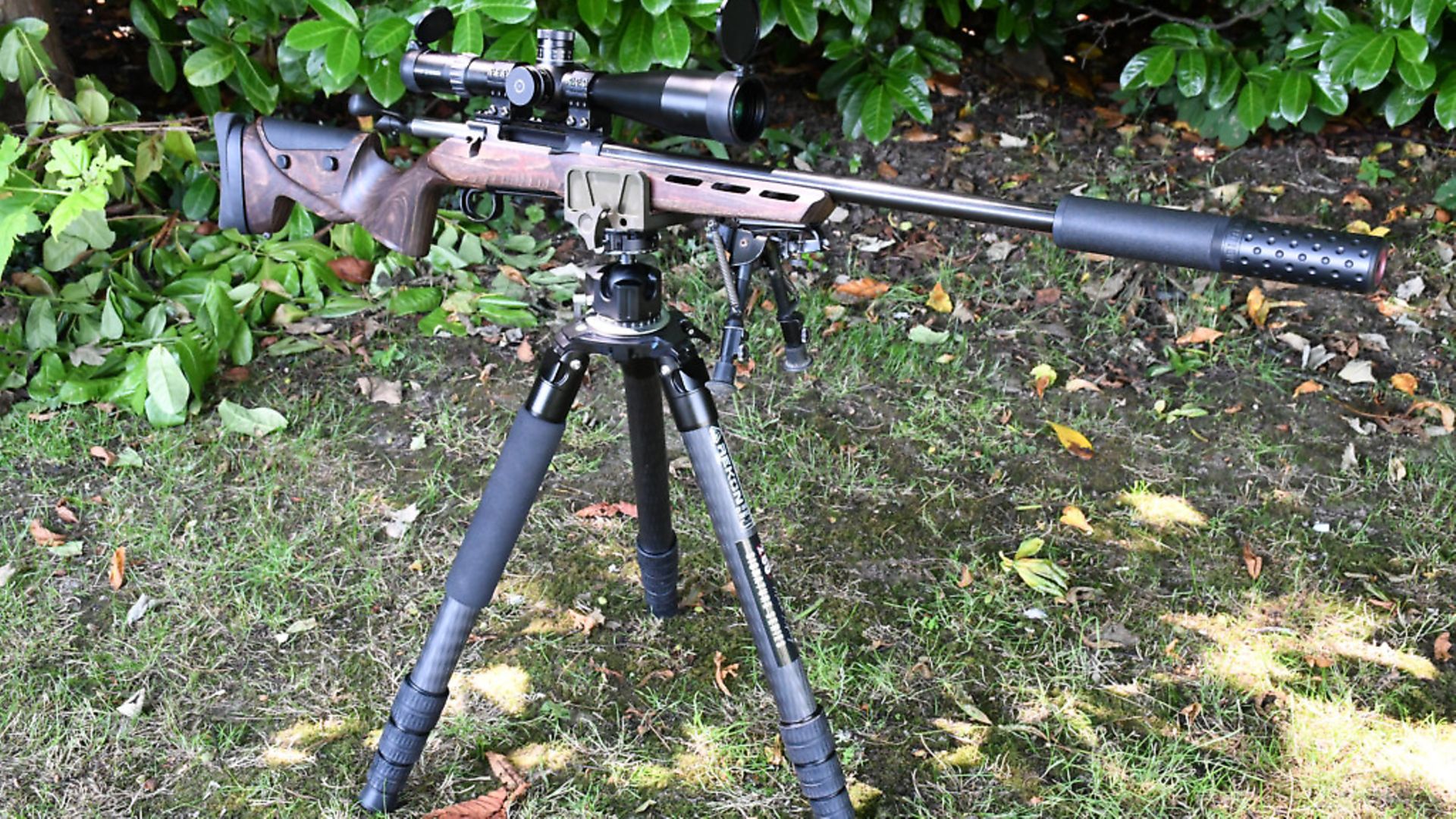 credit: Archant
credit: Archant
REKON CT3-HD 260rips Signature Edition TRIPOD - brief overview
PROS: Gear tensioned ball-head is fast to operate and lock: Additional stiffness from thicker legs is appreciable: Manufacturing standards are superb
CONS: I don’t see the need for four rotational controls (including the ball head); Smaller knobs don’t offer great grip in critical locations that need to stay tight for stability
VERDICT: The CT3 is definitely a more secure unit for precision shooters, if a little more detailed in setup over the original Rekon, but stability like this doesn’t for come free. I have found multiple situations where the Rekon has been the best option for static ambush shooting while also alleviating the strain of continually holding or supporting a rifle on sticks.
RRP: Tripod, £599.99; Hog saddle, £295 (sold seperately); Pig saddle, £139 (sold seperately)
CONTACT: Scott Country International 01556 503587
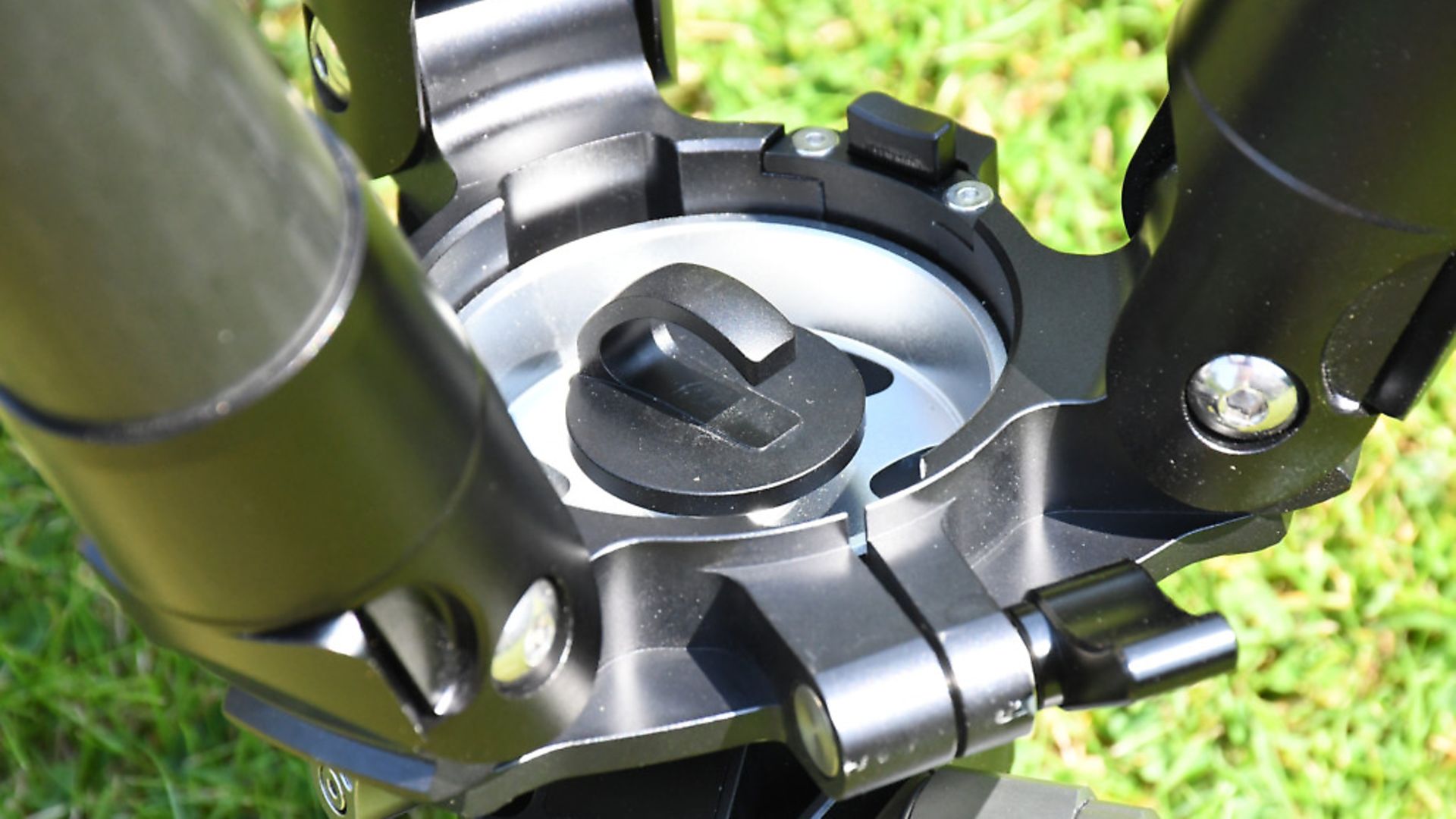 credit: Archant
credit: Archant
REKON CT3-HD 260RIPS SIGNATURE EDITION TRIPOD - TEST & REVIEW
Rekon have added a second model to their range of shooting tripods with help from Mark Ripley to create their Signature Edition aimed more at heavy precision rifle users than dynamic hunting scenarios. Although visually similar in many respects to the original, this heavier duty incarnation uses an Arca-Swiss mounting plate atop the legs to attach optional hog or pig saddle units or accept a rifle with an Arca rail on its underside.
I used the Rekon CT3s with the lighter hog saddle supplied by Scott Country, as this doesn’t have the weight of the pig saddle – it’s just 500g for a strong clamp that will hold a rifle with a parallel sided fore-end (up to 65mm wide) in position. It will clamp tapered fore-ends, but I find it’s not quite as secure and needs more force to compensate for lesser surface contact, although I do like the triangular knob which supplies a secure grip.
The tripod weighs 3.2kg and comes in a padded cordura carry case with internal pockets for the supplied ski feet and steel spikes, which can be swapped out for the non-slip rubber feet when needed.
Removable camo leg wraps and shoulder carry pad in digital woodland camo are included for leg protection and ease of carry in the field.
The four-part telescopic carbon fibre legs extend from 540mm to 1,685mmm, giving a maximum height to the Arca-Swiss plate of 1,650mm which is taller than most shooters are likely to need.
 credit: Archant
credit: Archant
Each leg has a non-sprung angular latch, allowing you to adapt the rig to different locations and scenarios – it’s not just for standing shots. If you want to go prone with the legs at their shortest span, the Arca plate is 260mm from the ground and pretty much anywhere between the two is available in under a minute.
The topmost section of each leg is 40mm in diameter with 28mm on the lowest, indicating approximately 2mm wall thickness for the eight-layer carbon fibre tubes, which are ultra-stiff and stable, even at full extension. Each locking junction is wrapped in a rubber collar to adjust the length with a quarter turn.
The legs are spanned by a proprietary triangular magnesium/aluminium structure designed for maximum stability under recoil. This then clamps the 44mm diameter ball head assembly advertising smooth ‘fluid’ movement – although is not actually a fluid head itself.
The head is rated at 20kg and it did feel reassuringly solid under my 10kg+ rifles with my weight added when leaning in. The ballhead’s base is locked into the triangular span with a small locking handle. I would recommend doing this up very tight and never fiddling with it in the field.
The underside features a hook to add stabilising weight and might also make an impromptu gralloching hanger for a small deer if it’s within the tripod’s weight range. 360° panning movement and cant/elevation is enabled by a single dial to the side of the ball, which can be switched either way to suit left- or right-handers. It has a smaller serrated dial on its end that offers geared tensioning for a super secure lockdown.
Two slots (90° to one another) allow the gun to be slipped to the side or almost vertically downward in excess of the ballhead’s core 45° travel in all other directions thanks to the long central neck on the ball itself. This does come at the cost of a low centre of gravity but all designs require some compromise. The very top has the Arca-Swiss clamp with a similar round knob to tighten it. I would prefer something with flats for a more secure grip, especially if it is going to be confined under a saddle or large rifle.
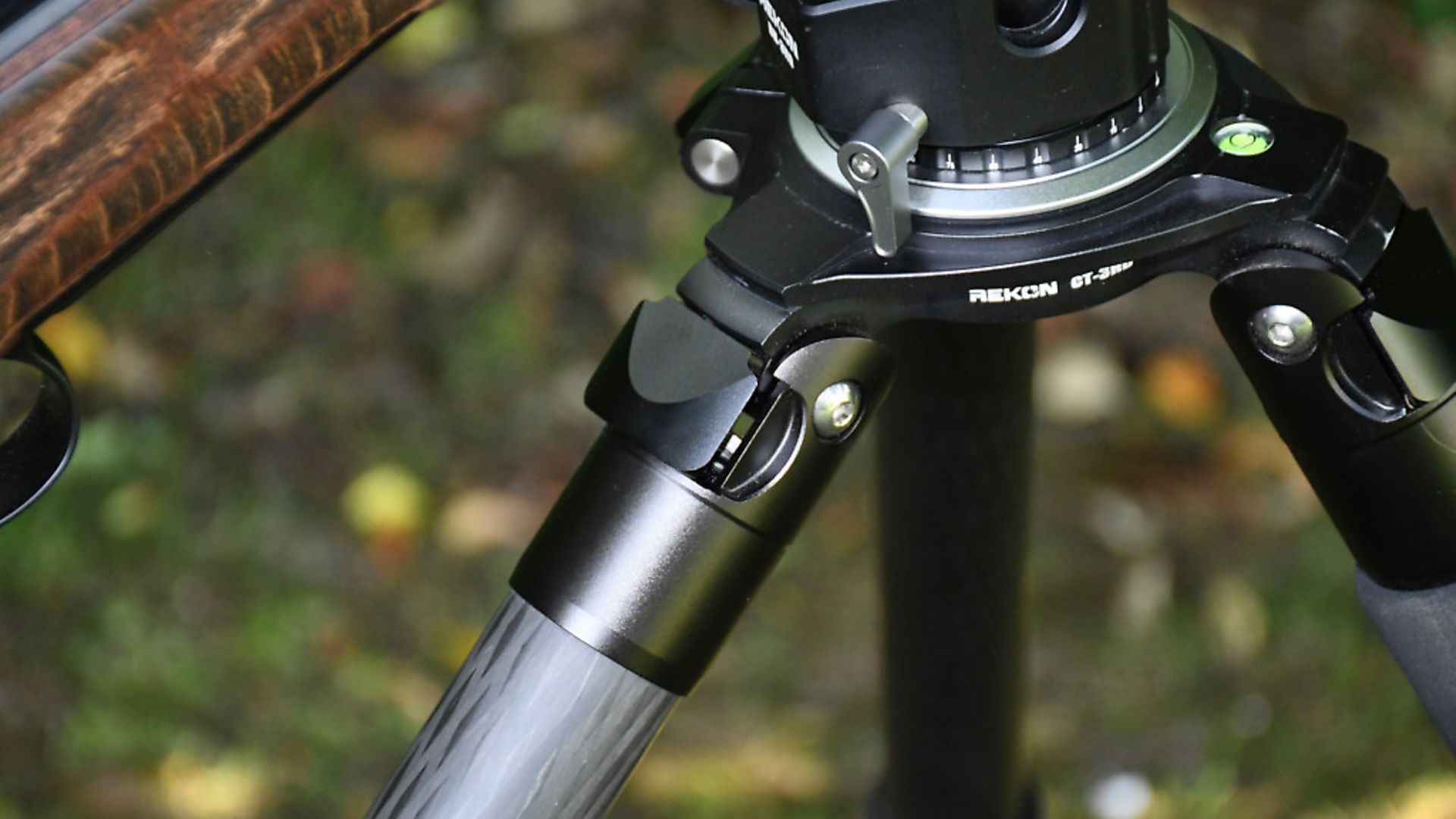 credit: Archant
credit: Archant
360° of rotation is available via a further locking lever. To be honest, I don’t really see the need because it’s hard to keep tight given the leverage of the gun. I really swung on this in the workshop with rubber-jawed pliers, so I don’t need to loosen it in the field. Most axes have angular markers engraved alongside with accompanying sprit levels, both of which aren’t really of much consequence to a shooter.
The fundamental stability of the tripod is excellent and I have found stable rest positions with both types of Rekon tripods I’ve used over the last 12 months. The added stiffness and stability of the CT3 beyond the CT1 does make a difference, especially with heavier rifles and at extended ranges, but the extra bulk does make it less suited to dynamic shooting, an area in which the original Rekon definitely still has its part to play.
The principle functional change is that with no adjustable centre column all height control has to be done via the legs, but to be honest, I hardly noticed the difference when shooting from static locations. At 3.7kg including the hog saddle, it’s fairly heavy, although not arduous and this is perhaps the price you pay for added stability. Although it seems expensive, it is well made, using fine construction standards and materials.
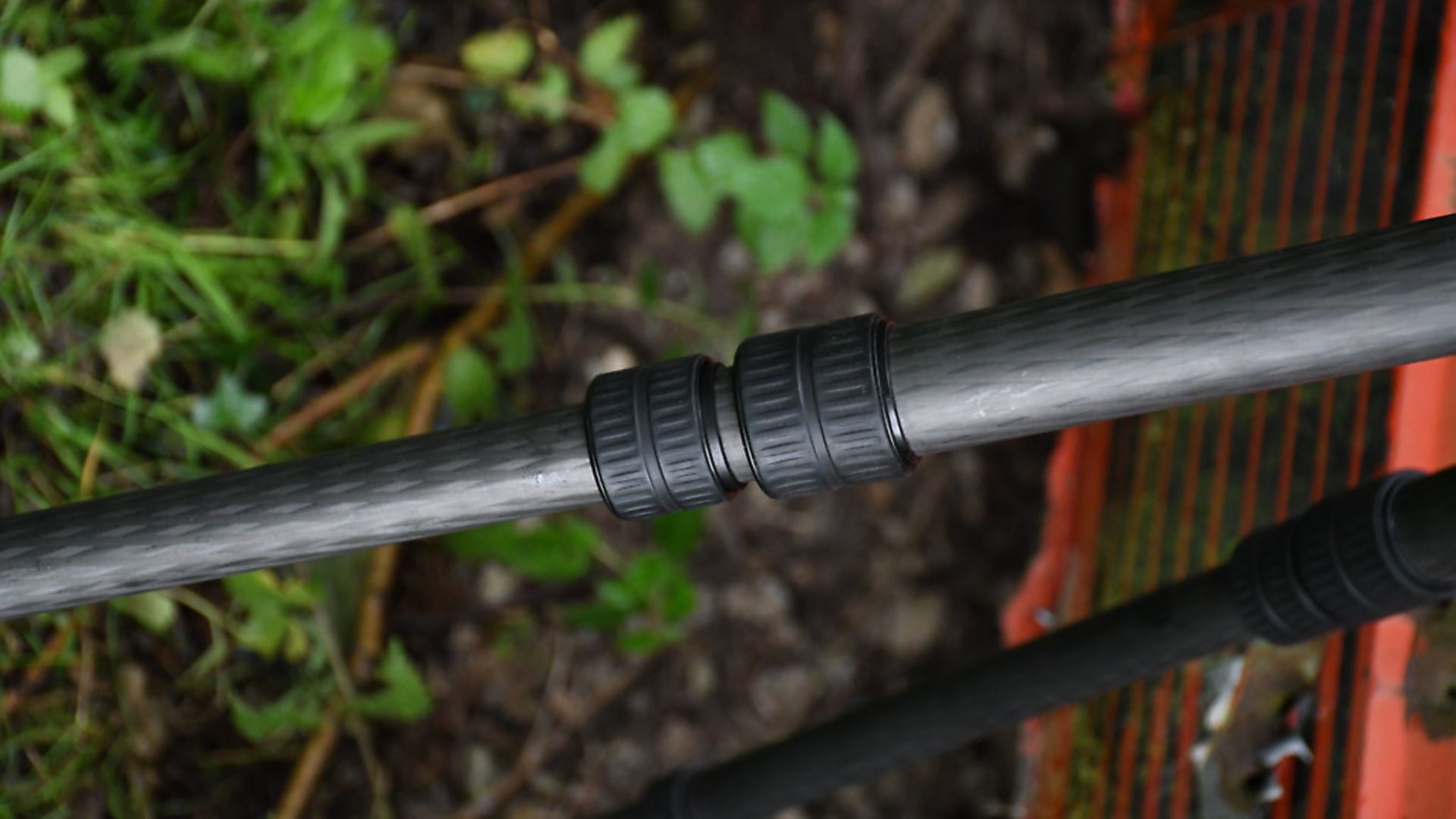 credit: Archant
credit: Archant
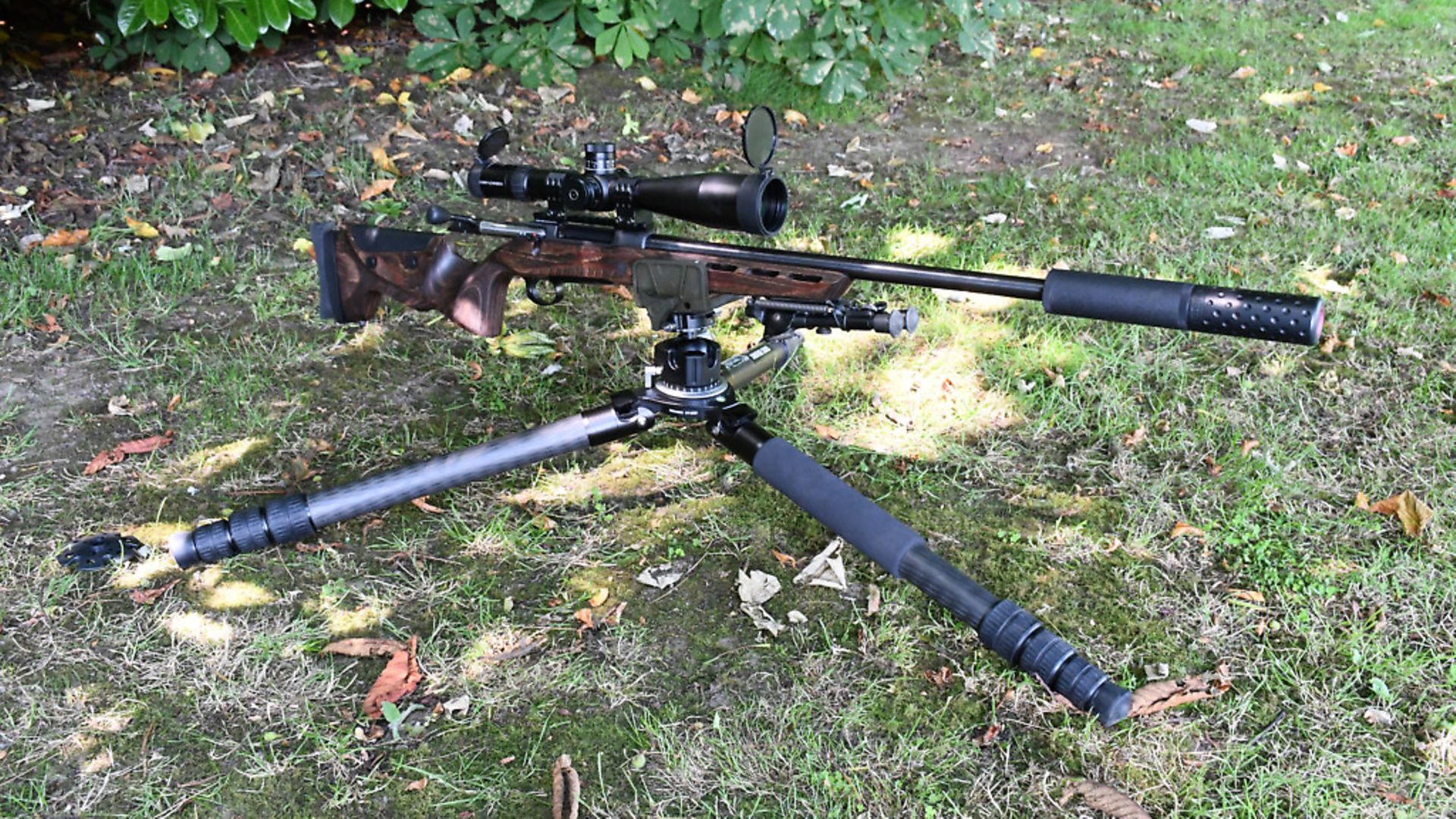 credit: Archant
credit: Archant